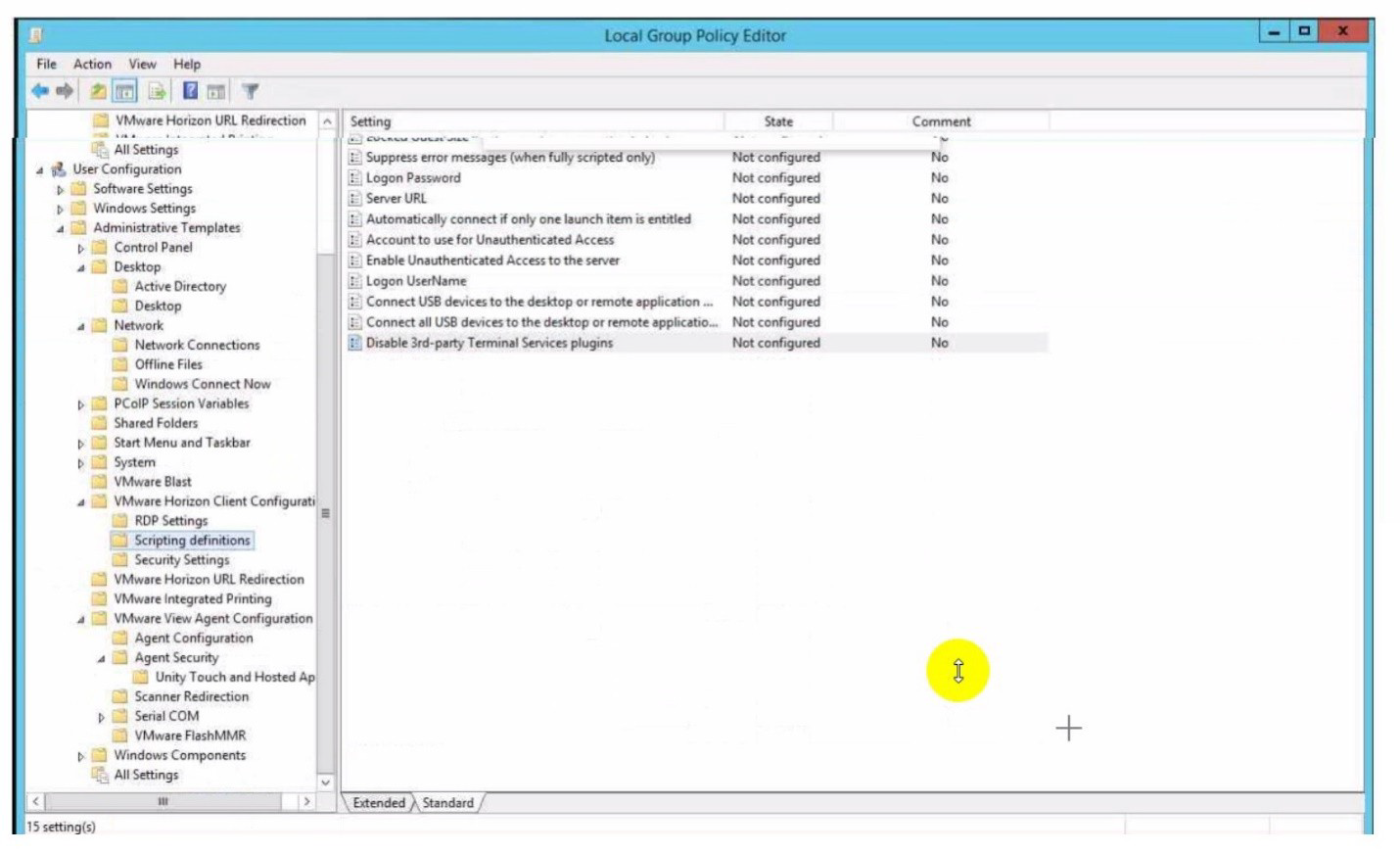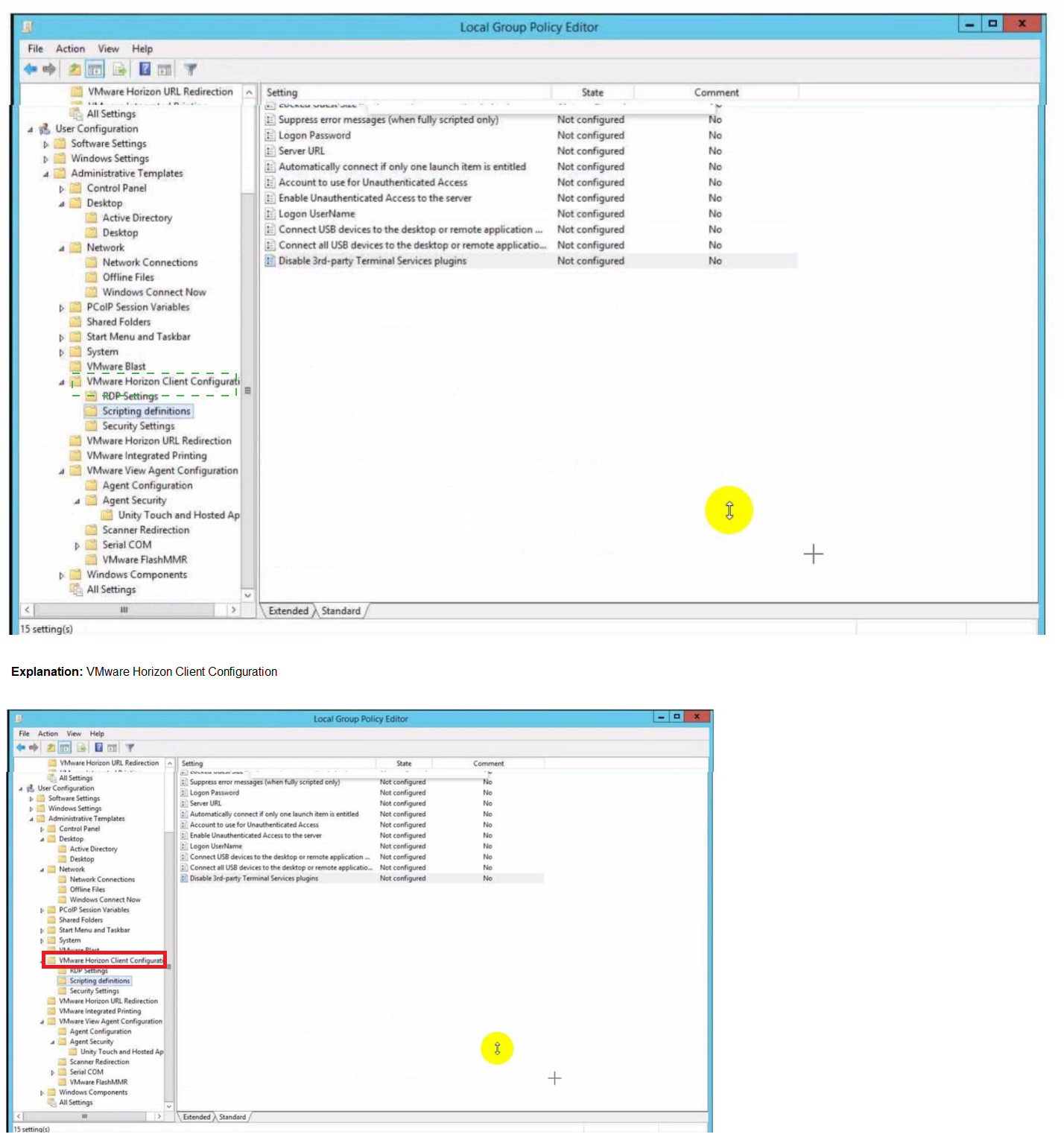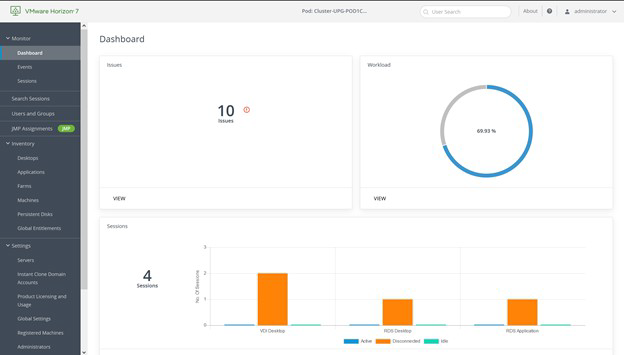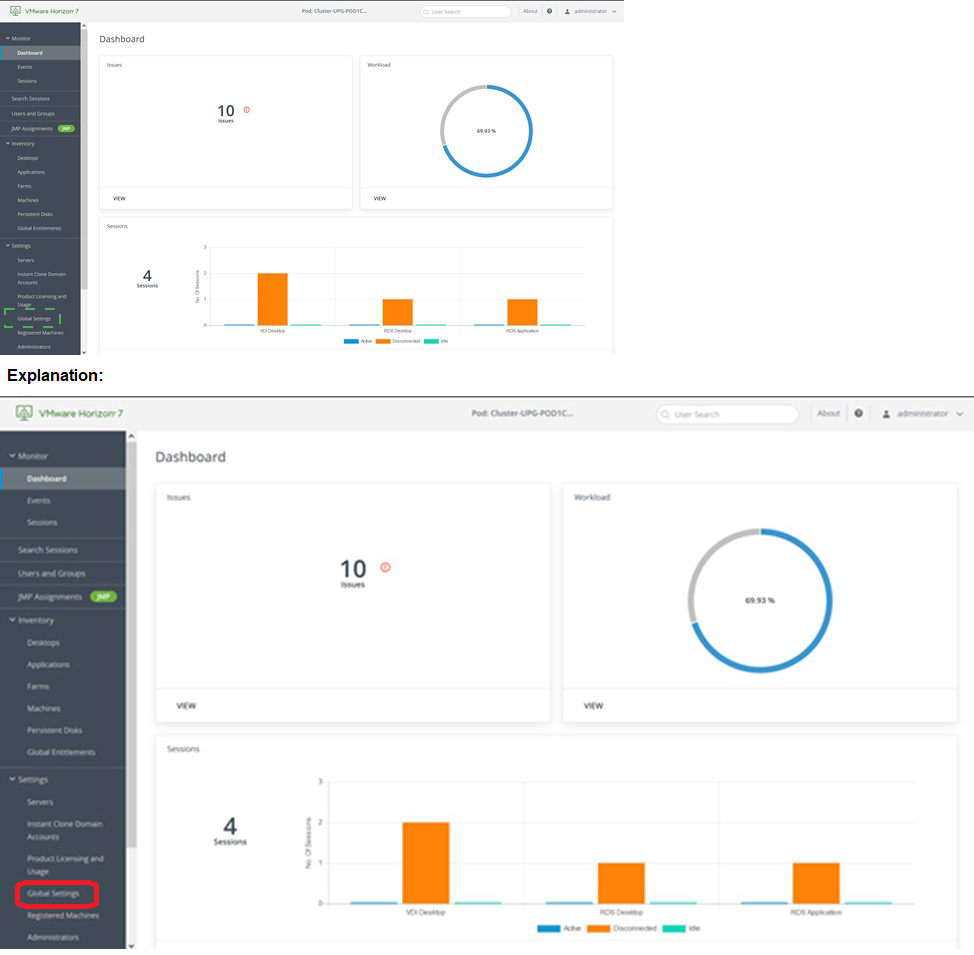
- Email support@dumps4free.com

Refer to the exhibit.
An administrator wants to set the initial login into a VDI desktop to be full screen.
In the Group Policy Management Editor Window, mark the setting that needs to be
configured by clicking on it.

How do multiple Horizon Connection Server instances in a pod maintain synchronization?
A. Horizon Connection Server instances keep their data in an AD LDS database, which is automatically synchronized between the Connection Server.
B. Horizon Connection Server instances keep their data in an Oracle database, which works as the central hub.
C. Horizon Connection Server instances keep their data in a local MySQL DB. The data is synchronized once every 24h.
D. Horizon Connection Server instances keep their data in an MS SQL database, which works as the central hub.
Explanation: Horizon Connection Server instances keep their data in an AD LDS database, which is automatically synchronized between the Connection Server. AD LDS is a Lightweight Directory Access Protocol (LDAP) directory service that provides flexible support for directory-enabled applications, without the dependencies that are required for Active Directory Domain Services (AD DS). AD LDS provides much of the same functionality as AD DS, but it does not require the deployment of domains or domain controllers. In a Horizon environment, each Connection Server instance has a copy of the AD LDS database and replicates changes to other Connection Server instances in the same pod. This ensures that the Connection Server instances have consistent and up-to-date information about the Horizon resources and user sessions.
An end-user is experiencing a black screen when connecting to their virtual desktop. After a few seconds, the connection closes. Which could be the cause of the issue? (Choose three.)
A. There is a vRAM shortage on the Horizon virtual machine.
B. The Client machine video memory is too high.
C. The incorrect video driver version is installed on the Horizon virtual machine.
D. The Horizon Virtual Machine video memory is too high.
E. There is an incorrect firewall configuration.
Explanation: A black screen when connecting to a Horizon virtual desktop can be caused
by various reasons, such as network issues, hardware issues, Horizon tunnel issues, or
underlying guest operating system issues. Based on the options given, the following could
be the cause of the issue:
The other options are not likely to cause a black screen when connecting to a Horizon
virtual desktop:
An administrator needs to deploy an application to specific users in their instant-clone
desktop environment with the following characteristics:
• The application needs to be updated very frequently.
• The application needs to be installed as soon as possible.
• The application is not multi-user aware.
Which solution would meet the requirements?
A. VMware Horizon Published Application
B. VMware Dynamic Environment Manager
C. VMware ThinApp
D. VMware App Volumes
Explanation: VMware App Volumes is a real-time application delivery system that allows
administrators to assign applications to users and groups in Horizon. App Volumes uses
virtual disks called packages to store and deliver applications. When a user logs on to a
desktop, the App Volumes agent attaches the assigned packages to the desktop and
merges them with the OS disk. The user can then access the applications as if they were
natively installed.
App Volumes is a suitable solution for deploying an application to specific users in an
instant-clone desktop environment with the following characteristics:
The application needs to be updated very frequently: App Volumes allows
administrators to update applications in real time by using the update or push image operations. These operations replace the existing packages with new ones
that have the latest updates applied, without affecting the user data or settings.
The updated packages are delivered to the users at the next login or refresh.
The application needs to be installed as soon as possible: App Volumes allows'
administrators to install applications quickly and easily by using a clean packaging
system and capturing the application installation process. The resulting package
can be assigned to users or groups immediately, without requiring any
recomposing or rebooting of the desktops.
The application is not multi-user aware: App Volumes allows administrators to
deliver applications that are not multi-user aware by using writable volumes.
Writable volumes are user-specific virtual disks that store user-installed
applications, data, and settings. Writable volumes can be attached to desktops
along with application packages, and they can isolate the user-installed
applications from the system-installed applications.
The other options are not suitable for meeting the requirements:
VMware Horizon Published Application: This option allows administrators to
publish applications from RDS hosts to users in Horizon. However, this option
requires a separate RDS infrastructure and licensing, and it does not support
instant updates or writable volumes for user-installed applications.
VMware Dynamic Environment Manager: This option allows administrators to
manage user profiles and policies in Horizon. However, this option does not deliver
or update applications, and it does not support writable volumes for user-installed
applications.
VMware ThinApp: This option allows administrators to package applications into
portable executables that can run on any Windows system without installation.
However, this option requires a separate packaging process and licensing, and it
does not support instant updates or writable volumes for user-installed
applications.
Refer to the exhibit.
An administrator prepared a golden image based on a Windows Server Operating System.
They plan to use this image to create a single-session virtual desktop pool. The installation
is completed, the virtual machine is turned off, and the snapshot has been created. When
the administrator creates the desktop pool, they are unable to select the created image and
snapshot. They do see other previously created golden images, based on Desktop
Operating Systems.
The administrator has opened the Horizon Console.
Mark the correct menu option where the administrator can enable Windows Server
Operating Systems to be used as single-session desktops by clicking on it.

| Page 3 out of 17 Pages |
| Previous |